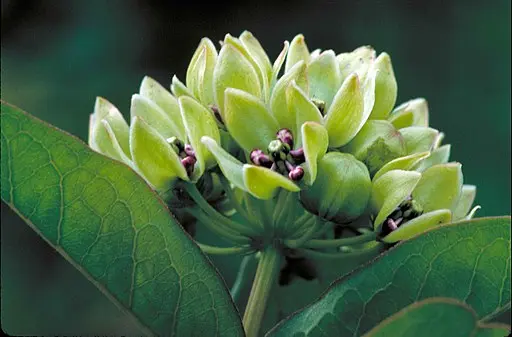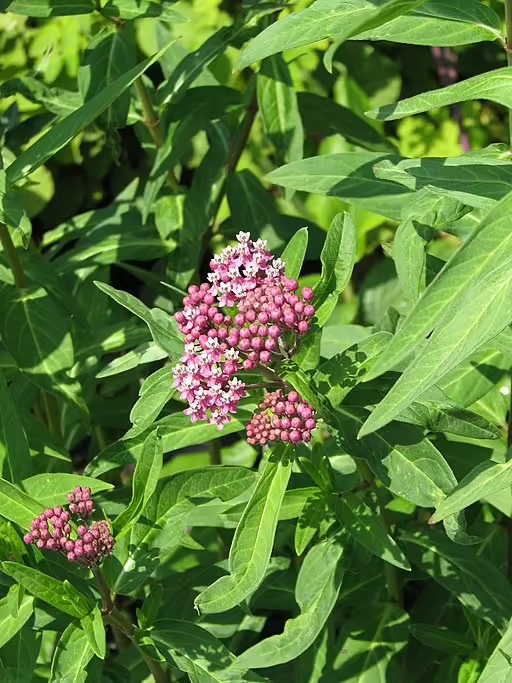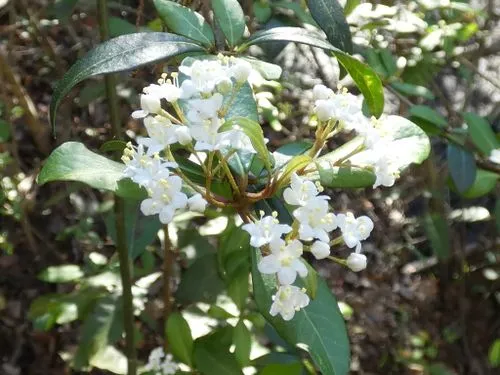Table of Contents for Guide to Bismarck, ND Swallowtails
Bismarck, North Dakota is located in central North Dakota in the United States. Bismarck is located within USDA Plant Hardiness Zone 4. In the Bismarck area, there are four species of swallowtail butterflies that you can host in your butterfly garden.
Location of Bismarck, ND and Burleigh County

The Bismarck area as covered in this post covers Burleigh County in North Dakota. The list of species includes those that occur in this county and nearby to it.
USDA Plant Hardiness Zones in Bismarck, North Dakota

Bismarck, ND and Burleigh County are within zone 4. When selecting plants you will want to get those that can handle temperatures as cold as -30F to be sure they will survive.
Canadian Swallowtail (Papilio canadensis) and its host plants in Bismarck, North Dakota




Canadian Swallowtail (Papilio canadensis)
The canadian swallowtail flies through the northeast and northern tier of the United States including Alaska and Canada. It has orange-brown eggs that are laid on the host plant. The caterpillar is brown at first to look like a bird dropping and then turns green later. The pupa then overwinters to emerge in the spring.
In the late spring to early summer (May to July) (McCabe and Post 1976) the adult butterflies start to fly. They have a wingspan of 2.5 inches (6.4 cm) to 3 inches (7.6 cm) inches and are yellow with black striped markings. It differs in coloration from the eastern tiger swallowtail in that the black stripes are not continuous to the bottom.
Plants that Host the Canadian Swallowtail
The canadian swallowtail, like the tiger swallowtails, are generalists. They use members of a number of genera as hosts, primarily from members of the Birch Family (Betulaceae), Rose Family (Rosaceae), Willow Family (Salicaceae), and the Maple Family (Aceraceae). In the Bismarck, ND area these include:
- Choke Cherry (Prunus virginiana): a small tree
- Fire Cherry (Prunus pensylvanica): a shrub to tree
- Great Lakes Sand Cherry (Prunus pumila): a shrub
- Quaking Aspen (Populus tremuloides): a tree
- Bog Birch (Betula pumila) a shrub to tree
- Paper Birch (Betula papyrifera): a tree
- Green Ash (Fraxinus pennsylvanica): a tree


Two-tailed Swallowtail (Papilio multicaudata) and its host plants in Bismarck, North Dakota



Two-tailed Swallowtail (Papilio multicaudata)
The giant swallowtail flies in the western half of the United States and south into Central America. The yellowish eggs are laid singly on the host plants. The caterpillar starts out black and white and then progressively becomes orange and green. The brownish chrysalis is camouflaged in leaf litter.
The adults have a wingspan of 3 inches (7.6 cm) to 6.5 inches (16.5 cm), are yellow and black colored and is similar to the tiger swallowtails. They differ from other butterflies by having thinner stripes and two tails on the hindwing.
Plants that Host the Two-tailed Swallowtail
In Bismarck the two-tailed swallowtail utilizes members of the olive family (Oleaceae) and the rose family (Rosaceae). Some examples in Bismarck include:
- Green Ash (Fraxinus pennsylvanica) — a tree.
- American Plum (Prunus americana): a small tree
- Fire Cherry (Prunus pensylvanica): a tree
- Choke Cherry (Prunus virginiana): a tree


Eastern Tiger Swallowtail (Papilio glaucus) and its host plants in Bismarck, North Dakota

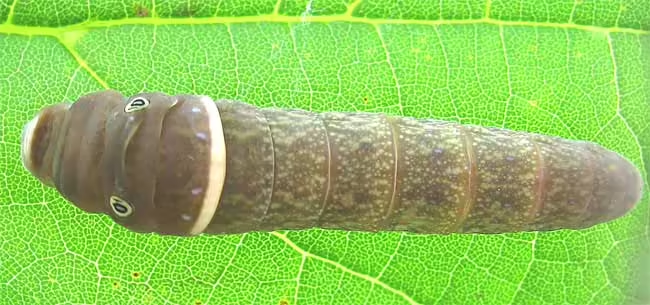

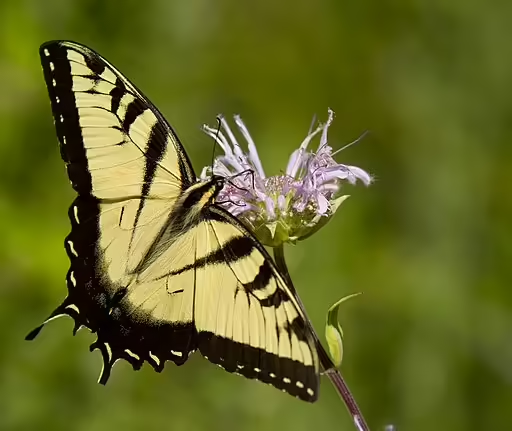

Eastern Tiger Swallowtail (Papilio glaucus)
The Eastern Tiger swallowtail flies in the mid-western and eastern United States from the Rocky Mountains and east. In the Eastern US it is likely one of the most distinctive swallowtails. The light green eggs are laid on the host plants. The caterpillar has five stages; with the first three a brown color and the last two as a green color. The brown chrysalis is placed in on trunks or on fallen leaves.
The adults have a wingspan of 3 inches (7.6 cm) to 5.5 inches (14 cm) and have two color schemes. The yellow and black is the most distinctive, but the females also have a dark black phase that mimics the pipevine swallowtail (see image). This butterfly often flies from May to September in North Dakota (McCabe and Post 1976).
Plants that Host the Eastern Tiger Swallowtail
The eastern tiger swallowtail is a generalist and uses members of a number of genera as host plants. Some species in the Bismarck area include:
- Members of the Prunus genus (Cherries and Plums)
- Members of the Betula genus (Birch)
- Members of the Populus genus (Poplar and Cottonwood)
- Members of the Fraxinus genus (Ash)


Black Swallowtail (Papilio polyxenes) and its host plants in Bismarck, North Dakota

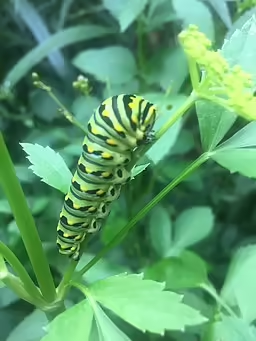

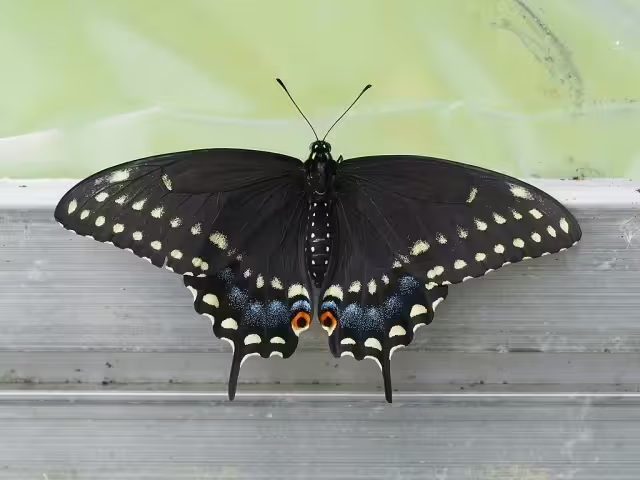
Black Swallowtail (Papilio polyxenes)
The black swallowtail flies in most of the United States, except for the Northwest. The yellow eggs are laid on the host plants and take about a week to hatch. The caterpillars are at first black colored but later have green, black, and yellow coloring and last from a week to a month. The butterflies then survive the winter as a chrysalis.
The adults have a wingspan of 2.5 (6.4 cm) to 3.5 inches (8.9 cm) and are black colored with yellow spots along the wings and a red eyepsot near the tail on the top. The underside has orange spots. It flies from May to September in North Dakota (McCabe and Post 1976).
Plants that Host the Black Swallowtail
The black swallowtail is a generalist and uses members of the carrot family (Apiaceae) as host plants. Some species in the Bismarck area include:
- Bulblet-bearing Water-Hemlock (Cicuta bulbifera): a herbaceous plant
- Spotted Water-Hemlock (Cicuta maculata): a herbaceous plant
- Plains Spring-Parsley (Cymopterus glomeratus): a herbaceous plant
- Leafy Wild Parsley (Musineon divaricatum): a herbaceous plant
- Aniseroot (Osmorhiza longistylis): a herbaceous plant
- Hemlock Water-Parsnip (Sium suave): a herbaceous plant
- Golden Alexander (Zizia aptera): a herbaceous plant


Nectar Plants to Consider Putting in Your Garden

While the swallowtails need certain species of plants to use as hosts, the adults also need nectar plants to visit in order get nourishment. Nectar plants can also help other insects such as bees. Some common nectar plants that can be grown in the Bismarck, ND area include:
- Milkweeds (Asclepias spp.) — Also benefit the Monarch Butterfly (Danaus plexippus)
- Spotted Joe-Pye-Weed (Eutrochium maculatum)
- Common Sunflower (Helianthus annuus)
- Wood Lily (Lilium philadelphicum) (Barrows 1977)
- Meadow Blazing Star (Liatris ligulistylis)
- Dotted Gayfeather (Liatris punctata)
- Coneflowers (Rudbeckia spp.)
- Goldenrods (Solidago spp.)
- Asters (Symphyotrichum spp.)
- Prairie Ironweed (Vernonia fasciculata)
Frequently Asked Questions
How much land do I need to start a butterfly garden?
Every plant that you can grow can make a difference for visitors to your garden, especially in urban areas. Potted plants are also useful en masse for pollinators. When planting your garden, make sure you plant both the host plants and nectar plants for the adults to feed on.
Where should I get my plants?
For pollinators, it is best to have native plant species. The insects will be used to these plants more than ones from other places. Be sure you get your plants from a reputable nursery that does not use neocontinids that would harm visitors to your garden.
Are there gardens near me, where I can see an example of a butterfly garden?
The Bismarck Rotary Arboretum is located in Bismarck and contains a prairie garden and wetland garden.
Books where you can find out more about Butterfly Gardening in the Bismarck, ND Area
- Branhagen, Alan. 2020. The Midwest Native Plant Primer: 225 Plants for an Earth-Friendly Garden. Little and Brown. 256 pp.
- Branhagen, Alan. 2016. Native Plants of the Midwest: A comprehensive Guide to the Best 500 Species for the Garden. Little and Brown. 440 pp.
- Daniels, Jaret C. 2023. Butterflies of the Midwest Field Guide – Butterfly Identification Guides. Adventure Publications. 364 pp.
- Daniels, Jaret C. 2022. Garden Bugs & Insects of the Midwest: Identify Pollinators, Pests, and Other Garden Visitors – Adventure Quick Guides. Adventure Publications. 36 pp.
- Daniels, Jaret C. 2020. Native Plant Gardening for Birds, Bees, & Butterflies: Upper Midwest – Nature Friendly Gardens. Adventure Publications. 276 pp.
- Independence Television. 2018. Landscaping for Butterflies, Bees, and Clean Water. – A video on native plants and butterfly gardening that can be viewed on the Internet Archive.
- Miller, George Oxford. 2021. Backyard Science & Discovery Workbook Midwest: Fun Activities & Experiments That Get Kids Outdoors – Nature Science Workbooks for Kids. Adventure Publications. 112 pp.
- Steiner, Christina. 2015. The Fantastic Travels of William and the Monarch Butterfly. Outskirts Press. 102 pp. — a childrens book about a monarch butterfly that travels from North Dakota to Mexico.
Affiliate Disclosure: When you click on links to various merchants on this site and make a purchase, this can result in this site earning a commission at no extra cost to you. Affiliate programs include, but are not limited to, the eBay Partner Network and Blackwell’s Books.
References
- Barrows, Edward M. 1977. Flower Biology and Anthropod Associates of Lilum philadelphicum. Michigan Botanist 18: 109-115.
- McCabe, Timothy L. and Richard L. Post. 1976. North Dakota Butterfly Calendar. Journal of Research on the Lepidoptera 15(2): 93-99.
- Scriber, Mark J., Michelle L. Larsen, and Myron P. Zalucki. 2008. Responses of North American Papilio troilus and P. glaucus to potential hosts from Australia. Journal of the Lepidopterists’ Society 62: 18-30.
